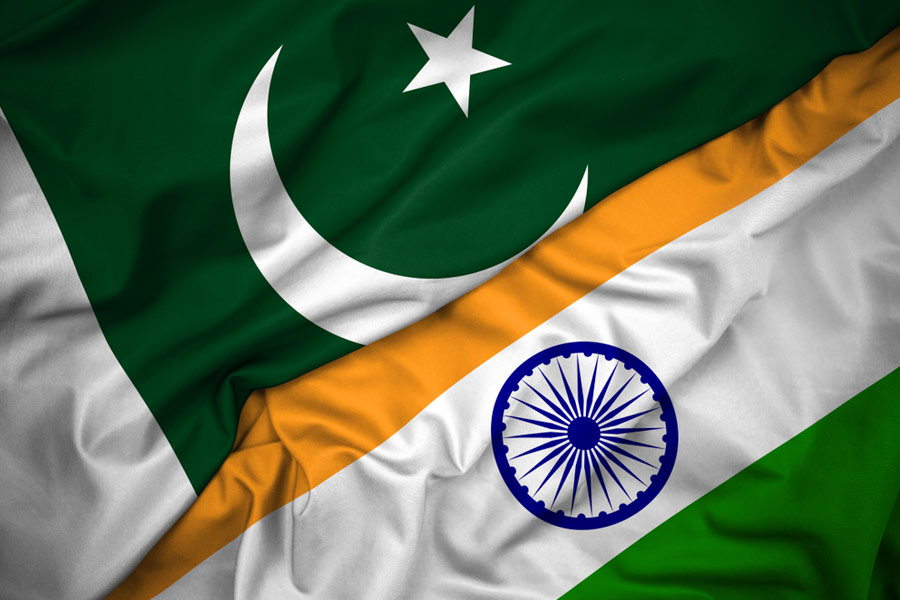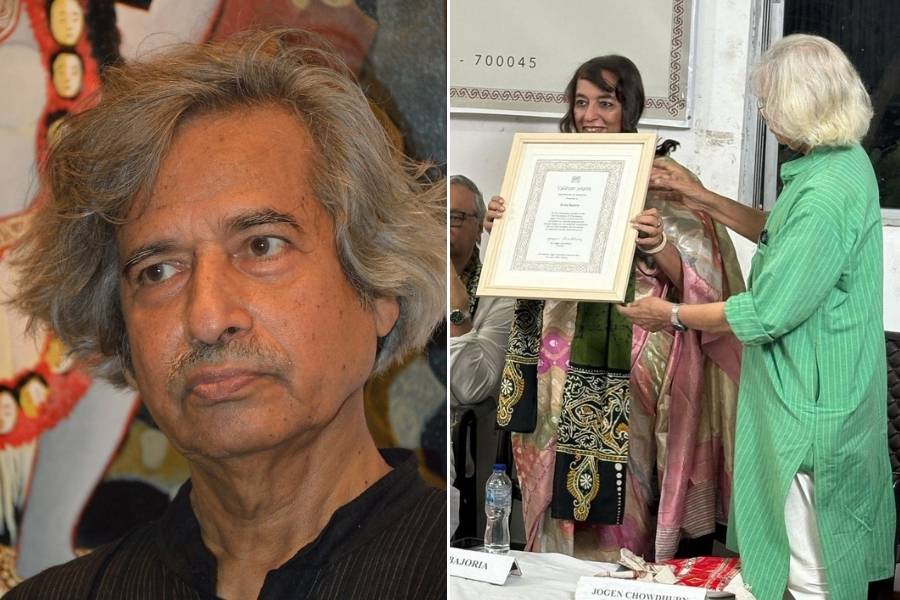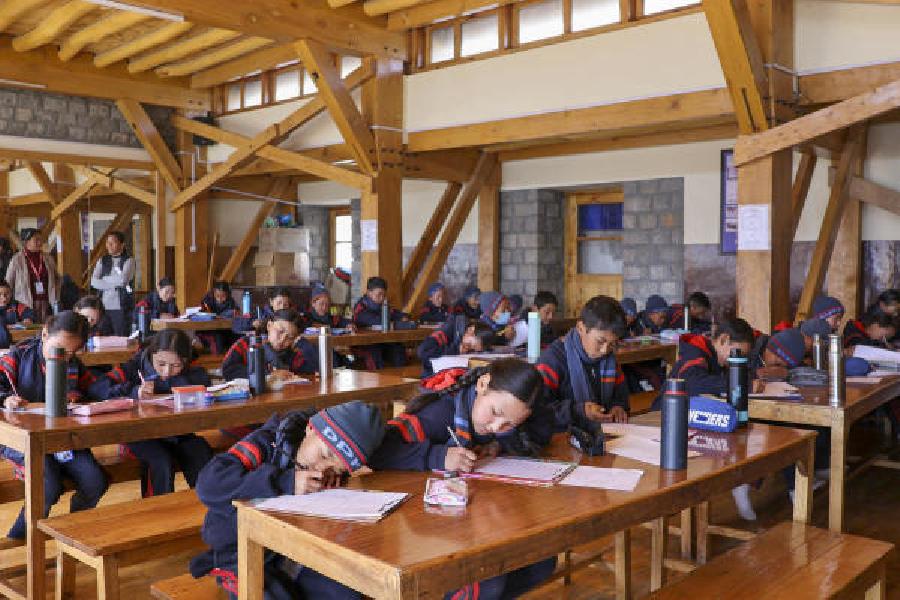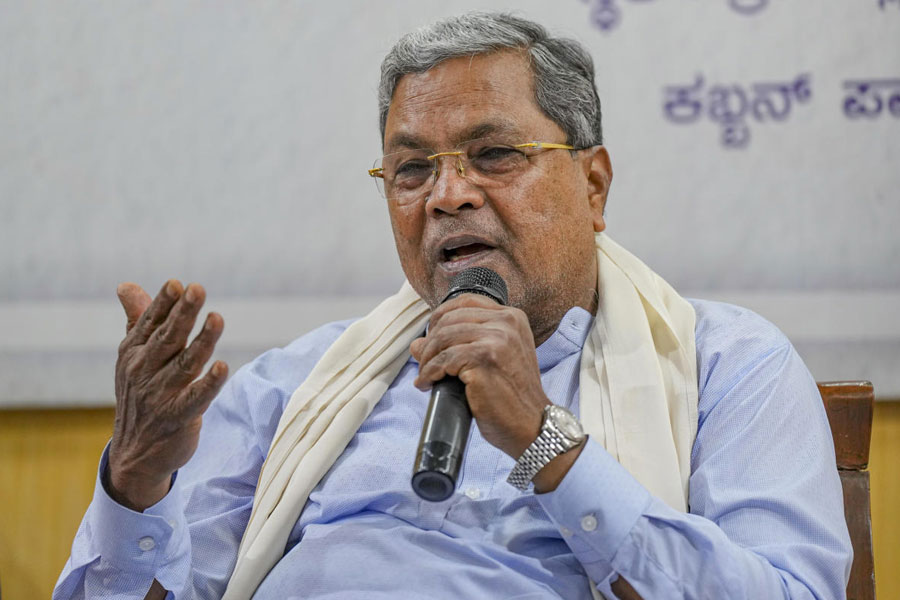 |
| Natalie Portman, who plays Padme in Revenge of the Sith, and director George Lucas at Cannes. (AFP) |
Cannes, May 15: A long time ago in a culture far, far away from America an epic was born, and today, in unveiling the big movie at Cannes ? the new Star Wars blockbuster, Revenge of the Sith ? Hollywood revealed how the Mahabharata has been ripped off.
Well, may be “ripped off” is too unkind an expression. It was more like adapted.
To be sure, when it comes to making movies, there are basically a handful of storylines.
But George Lucas, who has written and directed the sixth in his series of inter-galactic battles, Star Wars Episode III: Revenge of the Sith, appears to have drawn some of his best ideas from the Indian epic.
If Michael Moore’s Fahrenheit 9/11 was the defining moment of Cannes 2004, today’s world premiere of Star Wars was the most anticipated event of this festival.
There is a gripping theme to the story, which tackles the fine dividing line which separates good from evil, and, more specifically, Anakin Skywalker’s journey across this frontier to the dark side.
The sequence when the iron mask descends on his face (after he has received medical treatment for terrible burns suffered in an epic struggle) and he is transformed into Darth Vader may come to be applauded as one of the instantly recognisable moments of the Star Wars films ? and perhaps even of modern cinema. Lucas has taken a truly wonderful, chilling shot.
The 2,500 members of the audience (mostly journalists from 90 odd countries) packed into the Salle Lumiere burst into applause. If Goa is to match Cannes as the permanent site for the international Indian film festival, it will to have recreate such drama.
Those present recognised that in this one moment when Skywalker had crossed the line between good and bad and become Darth Vader, Lucas had himself reached for the stars. But what is good and what is evil is a philosophical question which comes up again and again in the Mahabharata. When Stars Wars comes to India, audiences will also recognise the familiarity of the discourse between Obi-Wan Kenobi (Ewan McGregor) and the wise old member of the Jedi Council, the small but big-eared Master Yoda (Frank Oz).
Yoda, whose grammar is engagingly eccentric for he turns his sentences back to front, might well observe: “ From the Mahabharata this is drawn if mistaken I am not.”
At times, it almost seems Lucas has taken Krishna’s discourse to Arjuna, who is unwilling to take up arms against kith and kin, and turned it into Hollywood dialogue.
In the Gita, we hear the justification for spilling family blood when the cause is just.
Cut to Star Wars. Lights, cameras, action ? and several English language translations of the said epic.
Kenobi cannot face the prospect of taking up his light sabre against Skywalker, played, as before and more convincingly this time, by Hayden Christensen. Yoda realises the task has to be confronted but Kenobi cannot.
After all, as Kenobi says, he loves Skywalker, to whom he has passed on all his martial skills and the guiding philosophy of the Jedis. “He’s like my brother,” wails Kenobi. It’s Krishna and Arjuna all over again.
Nor do the similarities end there.
The Indian philosophy that man has to cut the bonds of maya to be truly free comes up again and again.
In a dream, Skywalker sees that Padme (is this just Hollywood’s way of spelling Padma?) will die in childbirth. But if he can acquire the power to prolong life for ever, he can save her. Or so he is told by the Supreme Chancellor Palpatine (Ian McDiarmid), who has visions of replacing the democratic republic over which he governs by declaring himself the supreme ruler of the entire galaxy.
Some American journalists have already remarked on parallels between the Supreme Chancellor’s expansionist ambitions and George Bush’s military campaigns.
The audience is prepared for Skywalker’s conversion to Darth Vader when the former is told: “Fear of loss is the path to the dark side.” Instead, he is urged: “Train yourself to let go of everything you fear to lose.”
At two hours and 20 minutes, the film is perhaps half an hour too long, though traditional fans of the Star Wars movie will get their money’s worth, given the army of visual effects people who have worked on the project.
There is some excruciatingly painful American dialogue ? Padme tells Skywalker at one point that “I have to leave early because I have to prepare our baby’s room”.
Discriminating audiences in India will perhaps conclude that it is the Indian bits in the film which work best. Christopher Lee, who used to play Count Dracula, plays a villain, Count Dooku, but he makes an early exit after being killed by Kenobi. It is just possible that Dooku is just a good old-fashioned Indian daaku.
Today’s gala screening in the evening was due to be attended by Lucas, as well as cast members, including Natalie Portman and Hayden Christensen. The Star Wars trilogy was released in 1977, 1980 and 1983, with the “prequels” following in 1999 and 2002.
Star Wars is supposed to die with the Revenge of the Sith. Padme dies in childbirth, leaving behind twins, Luke and Leia, who are spirited away for their own safety. No one should be surprised if they return.










